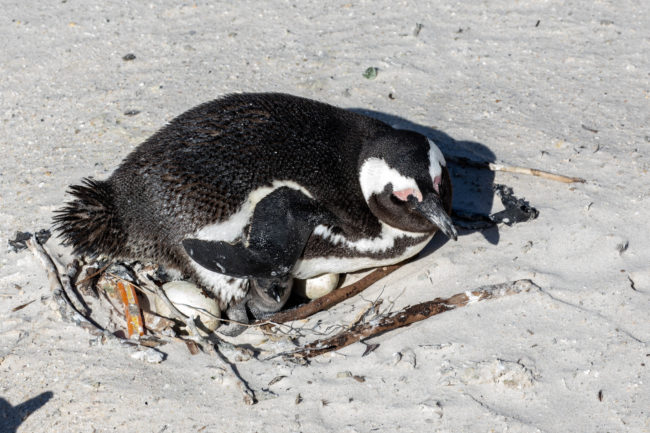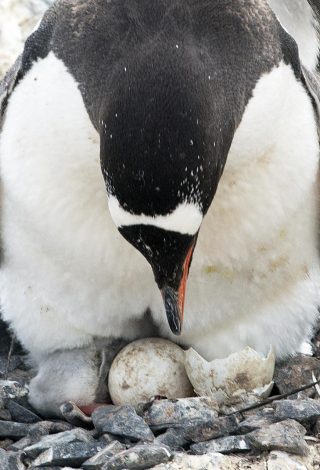The female and male penguin’s first bond and then mate to lay an egg the size of a softball on the ice in midwinter. The male thrusts the egg up onto his feet, where it is protected and cushioned by the male’s “brood patch,” a warm fold of feathers and his bulging stomach which rests atop the feet. The egg remains in that place for 9 weeks until it hatches during the coldest months of the Antarctic winter.
Both female and male penguins protect their eggs and newly hatched chicks by enveloping them under a fold of body skin. During the reproductive cycle of the first part the mother penguin has to fast, but after eggs are laid, they go away to fatten them.
The adult males then take over, incubating the eggs and the newly hatched chicks for the 9 weeks in midwinter. The part of the bird’s belly touches the egg and the bare of feathers to facilitate the waft of heat from the father penguin to his offspring. At the end of their babysitting stint, the fathers turn the chicks over to their returning mother penguin and cross the sea again.
If the weather conditions come to be so severe that a parent’s resources can no longer deal with the cold, it abandons the egg to save itself, as it could do under other cases. All penguins are littered with abandoned eggs and dead chicks.
Females lay a single egg in midwinter and then promptly leave it behind. Depending on the volume of the ice, the females might also need to travel some 50 miles to attain the open ocean, in which they will feed on squid, fish, and krill.
For instance: At sea, the emperor penguins can dive to 1,850 ft deeper than some other penguins and stay beneath that for more than 20 minutes.
In Antarctica, male emperors hold the newly laid eggs warm, but they do not sit down on them, as many other male penguins tuck the egg between their bulging stomach and feet To keep it warm till it hatches about 2 months after the egg has been laid.
The male stands and protects their eggs from the elements by balancing them on their feet by wrapping them with feathered pores and skin referred to as a brood pouch. During this two months session of babysitting the males eat nothing and are at the mercy of the Antarctic elements.

Baby Penguin by Chris Hoare / CC BY
While female penguins travel more than 50 miles to get food and go back to the breeding, they create a belly full of food that they regurgitate for the newly hatched chicks. Meanwhile, their duty is done; male penguins take to the sea in search of food for themselves.
Mother penguin cares for their young chicks and protects them with the warmth of their brood pouches. Beside this warm cocoon, a chick could die. In the Antarctic, the pack of ice starts to melt, and the water seems close to the breeding site, just as young emperor penguins are equipped to swim and fish on their very own in summer.
Reference Links:
https://gridclub.com/subscribers/info/fact_gadget_2009/best_ever_qa/nature/birds/1549.html
https://earthsky.org/earth/male-penguin-eggs
https://animals.mom.me/how-do-penguins-keep-their-eggs-warm-12146324.html
https://www.nationalgeographic.com/animals/birds/e/emperor-penguin/
